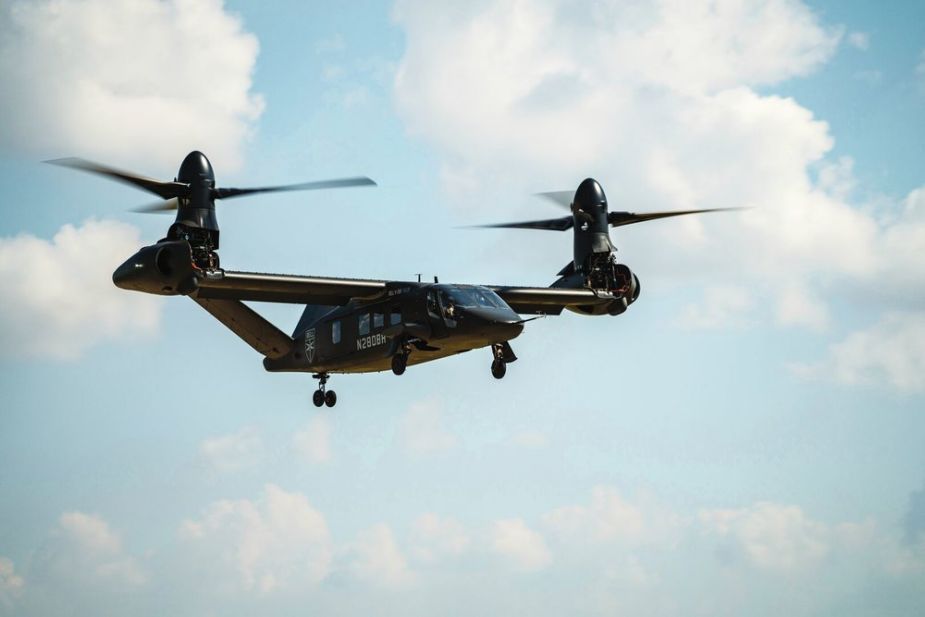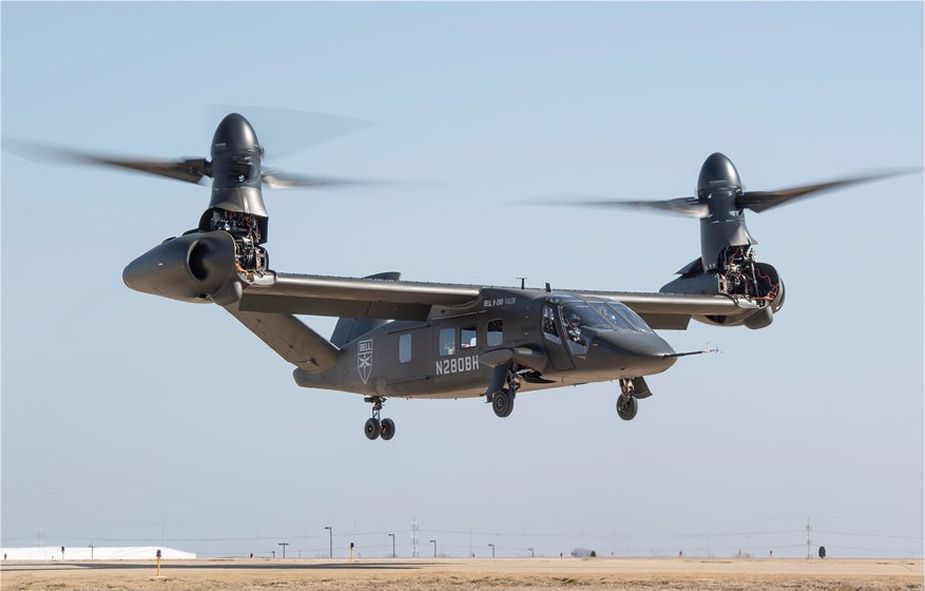Review Part 1 US Army Future Vertical Lift FVL program: Bell V-280 Valor tiltrotor aircraft
A review by Air Recognition editorial team about the Future Vertical Lift FVL program of U.S. Army, part 1, the Bell V-280 Valor. Currently, two American companies compete for the U.S. FVL program including Sikorsky-Boeing and Bell. The FVL is currently looking at five basic categories of aircraft varying in size, but the initial program is to create a medium transport platform capable of succeeding U.S. Army UH-60 Black Hawk and U.S. Marines H-1 “Huey” utility helicopters.
Follow Air Recognition on Google News at this link
 The Bell V-280 Valor, one of the candidates for the US Army Future Vertical Lift FVL program.(Picture source Bell)
The Bell V-280 Valor, one of the candidates for the US Army Future Vertical Lift FVL program.(Picture source Bell)
In March 2020, the U.S. Army’s PEO Aviation, working with Army Contracting Command, Redstone recently awarded the FLRAA(Future Long-Range Assault Aircraft) CD&RR (Competitive Demonstration and Risk Reduction) project agreements under the Aviation and Missile Technology Consortium Other Transaction Authority (OTA) to Bell Textron with the V-280 tiltrotor, and Sikorsky-Boeing with the SB-1 Defiant.
The U.S. Army lists FVL (Future Vertical Lift) as one of its top six modernization priorities. The Marine Corps and Navy also plan to use FVL-derived technology in their next-generation rotorcraft. Although the FVL effort is intended to benefit all services, and elements of the work are joint, the Army is the lead service, and most funding for the program is included in the Army’s R&D budget.
Bell and Sikorsky-Boeing have produced demonstrators for FLRAA. The two companies are taking different technology approaches to their efforts. The Bell V-280 is a tiltrotor aircraft like the V-22 Osprey, with engines and rotors at the end of its wings that swivel. The Sikorsky/Boeing SB-1 is a compound helicopter, using twin coaxial rotors to provide lift and a pusher propeller to enhance speed.
The Bell V-280 Valor is a tiltrotor aircraft developed by Bell and Lockheed Martin to respond to the Future Vertical Lift program of U.S. Army. It was officially unveiled in 2013 during the Army Aviation Association of America's (AAAA) Annual Professional Forum and Exposition in Fort Worth, Texas. It has conducted its first flight in December 2017.
In December 2019, Bell has announced that after two-years of highly successful flight demonstrations the Bell V-280 Valor continues to showcase new capabilities to show how the aircraft meets the challenges of future fights. The aircraft has flown more than 150 hours through multi-sortie test days and numerous public demonstrations to deliver data and inform requirements for the U.S. Army’s Future Long-Range Assault Aircraft (FLRAA) program.

The Bell V-280 was developed using the technology of tiltrotor aircraft like the V-22 Osprey. (Picture source Bell)
The Bell V-280 was developed using the technology of tiltrotor aircraft like the V-22 Osprey. It has a cruising speed of 520 km/h, a top speed of 560 km/h, a range of 3,900 km, and an effective combat range from 930 to 1,480 km. It has been designed to perform a wide range of missions as air assault, Special OPs, attack, MEDEVAC and utility helicopter.
A tiltrotor is an aircraft that generates lift and propulsion by way of one or more powered rotors mounted on rotatable engine pods or nacelles usually at the ends of a fixed-wing or an engine mounted in the fuselage with drive shafts transferring power to rotor assemblies mounted on the wingtips. Tiltrotor design combines the vertical lift capability of a helicopter with the speed and range of a conventional fixed-wing aircraft. For the vertical flight, the rotors are angled so the plane of rotation is horizontal. In vertical mode, the rotors provide thrust like a propeller, and the fixed wings provide the lift generated from the forward motion of the entire aircraft.
The V-280 will have a crew of four and be able to transport up to 14 troops. Dual cargo hooks will give it a lift capacity to carry 4,500 kg with a flying speed of 280 km/h. The fuselage looks similar to the UH-60 Black Hawk helicopter. According to Bell, the V-280 is a multirole helicopter that can be configured for utility and attack missions. A single airframe is used to interchange payloads for either mission.
The V-280 has retractable landing gear, a triple-redundant fly by a wire control system, and a V-tail configuration. The wings are made of a single section of carbon fiber reinforced polymer composite, reducing weight and production costs.
According to Bell, AV-280 variant can launch rockets, missiles, and even small unmanned aerial vehicles forward or aft with no rotor interference, even in forward flight and cruise modes with the rotors forward.


























